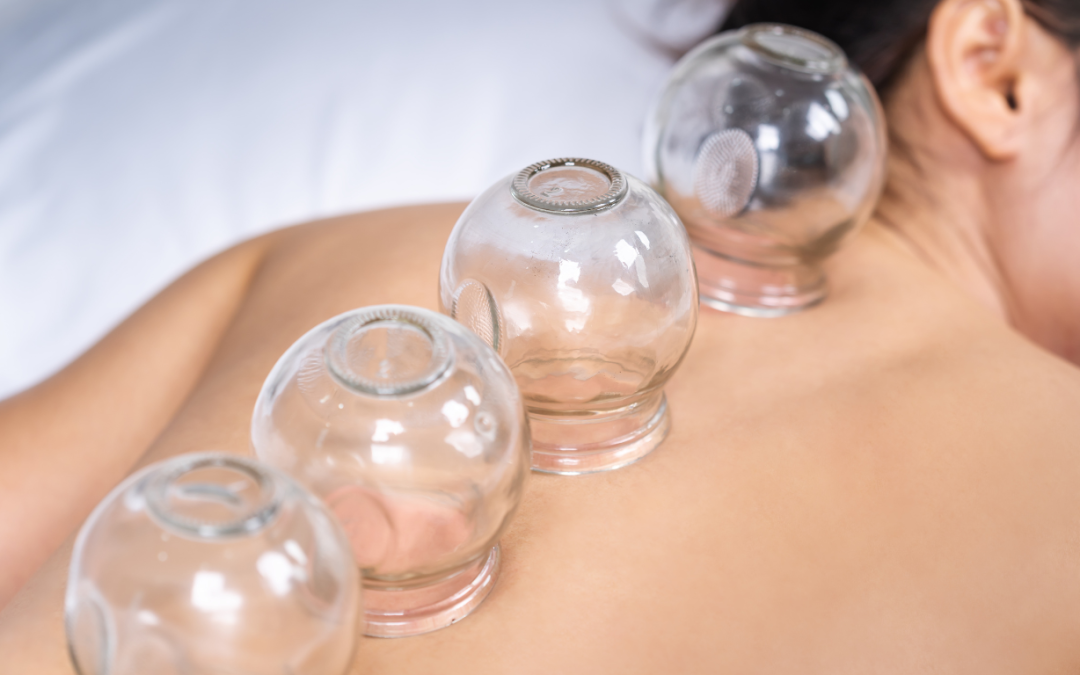Cupping Therapy for Musculoskeletal Pain: How This Ancient Technique Can Help You Heal
Cupping therapy has gained popularity in recent years—especially among athletes and people dealing with chronic pain—but this healing method has been used for thousands of years in Traditional Chinese Medicine (TCM). Often performed by registered acupuncturists, cupping involves placing specialized suction cups on the skin to help reduce tension, improve circulation, and support musculoskeletal recovery. But does it really work?
Let’s explore the benefits of cupping therapy, how it works, the research behind it, and why it’s a powerful tool for managing pain, stiffness, and injury.
What Is Cupping Therapy?
Cupping therapy uses negative pressure (suction) to lift the skin and underlying tissues. A registered acupuncturist places glass, silicone, or plastic cups on specific areas of the body, often on the back, shoulders, or thighs. This suction creates space between the layers of tissue, helping to increase blood flow, reduce muscle tension, and promote healing.
There are two main types of cupping:
-
Dry cupping: Uses suction only.
-
Wet cupping: Involves slight skin pricks followed by suction (less commonly used in Canada and not offered at Remedy).
In most wellness clinics like Remedy Wellness Centre in Victoria, dry cupping is the preferred method and is often combined with acupuncture or tui na massage.
Benefits of Cupping for Musculoskeletal Pain
-
Pain Relief and Tension Reduction
Cupping helps reduce muscular tension by improving circulation to tight or inflamed tissues. The suction promotes blood flow to the area, delivering oxygen and nutrients that aid in the healing process.
📚 Research Highlight:
A 2020 systematic review published in BMJ Open concluded that cupping therapy showed significant pain reduction in people with lower back pain, neck pain, and knee osteoarthritis compared to control groups. [Source]
-
Improved Range of Motion and Flexibility
By loosening muscle knots and breaking up adhesions, cupping can help increase mobility—especially helpful for athletes, people recovering from injury, or those with postural strain from desk jobs.
💬 Example:
One patient with chronic shoulder stiffness from a rotator cuff injury noticed increased shoulder mobility and reduced discomfort after three combined sessions of acupuncture and cupping therapy.
-
Reduced Inflammation
Cupping is believed to reduce localized inflammation by stimulating the immune response and encouraging lymphatic drainage, which helps flush out metabolic waste.
📚 Research Highlight:
A 2018 review in the Journal of Traditional and Complementary Medicine noted that cupping significantly decreased markers of inflammation (like C-reactive protein) in people with musculoskeletal pain.
-
Faster Recovery from Injury or Training
Many athletes turn to cupping therapy to help speed up muscle recovery after intense training. The increased blood flow and fascial release can reduce delayed-onset muscle soreness (DOMS) and accelerate recovery.
💬 Example:
You might remember Olympic swimmer Michael Phelps’ dark circular cupping marks—he credited cupping with helping him recover faster between races.
-
Support for Chronic Conditions
Chronic conditions like fibromyalgia, arthritis, and myofascial pain syndrome often involve widespread musculoskeletal pain. Cupping can provide gentle, non-invasive relief for these patients.
What Does Cupping Feel Like?
Most people describe the sensation as a deep stretch or pulling. The cups typically stay in place for 5–15 minutes, and you may be left with circular marks that fade within a few days. These marks are not bruises—they’re a sign that stagnant blood and toxins are being drawn to the surface.
Cupping Therapy with a Registered Acupuncturist
In British Columbia, cupping therapy is often offered by licensed acupuncturists who understand how to apply it safely and effectively. They assess your body using both Western and Eastern diagnostic tools, then use cupping in targeted areas as part of an individualized treatment plan that may include:
-
Acupuncture
-
Tui na massage
-
Heat therapy (moxibustion)
-
Stretching or movement recommendations
At Remedy Wellness Centre in Victoria, our team of acupuncturists offers cupping as a stand-alone treatment or integrated into acupuncture sessions for musculoskeletal pain relief.
Is Cupping Right for You?
If you experience:
-
Chronic back, shoulder, or neck pain
-
Sports-related tension or injury
-
Arthritis or fibromyalgia
-
Postural strain from sitting or repetitive movements
…then cupping may be a great addition to your wellness routine.
Always consult with a trained practitioner before starting any new therapy, especially if you are pregnant, have thin skin, or take blood thinners.
Book a Cupping Session in Victoria, BC
Ready to experience the benefits of cupping for yourself? Book an appointment with one of our experienced acupuncturists at Remedy Wellness Centre. Whether you’re recovering from injury, managing chronic pain, or simply feeling tense, cupping therapy can help your body unwind and heal naturally.

